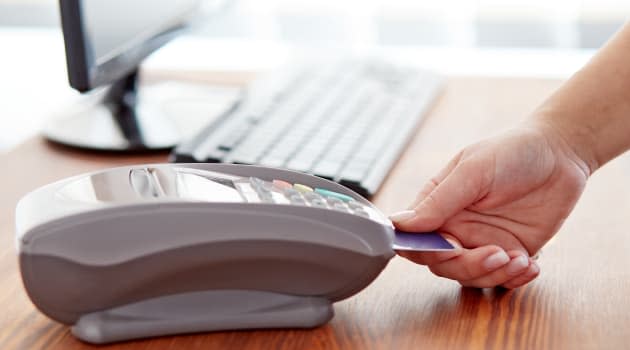No Signature Needed: How Credit Card Transactions Are Changing

The credit card evolution from magnetic strip to EMV chip hit yet another milestone. Starting this week, stores and restaurants no longer need your signature to complete a chip card transaction.
Most Americans may not notice the switch largely because low-ticket purchases before didn't require a signature. But the change marks yet another step in the slow migration by the U.S. to a credit card system that is less vulnerable to counterfeit fraud and one that much of the world readily adopted decades ago.
“Today, [the transition] is at fairly healthy place versus several years ago when there was pushback from retailers. That was the primary road bump,” says Bill McCracken, CEO of Synergistics, a market research firm for the financial services industry. “But as you read about point-of-sale fraud, you see a 60% to 70% decrease since chip cards were introduced. That’s a huge win for retailers.”
What’s the big change?
Mastercard, Visa, American Express and Discover won’t require U.S. merchants to collect signatures as a fraud deterrent if you pay with a chip debit or credit card. It’s not a huge pivot, though. More than 80% of Mastercard’s in-store purchases and three-quarters of Visa’s don’t need a signature. That’s because they long ago ditched the signature requirement on transactions under $50.
Requiring signatures is also an antiquated method of fighting fraud. Many merchants don’t bother to even compare signatures anymore, says McCracken. And it’s become even more useless as chip cards have proliferated.
Chip, or EMV, cards are nearly impossible to clone into counterfeit cards because the chip generates a unique code for authentication each time the card is used. It’s a one-time-use code, so even if a fraudster steals the code, it’s useless for future purchases.
Chip card data still can be swiped during a data breach—such as this week’s hack at Saks and Lord & Taylor. But again, criminals could not create a useable counterfeit card from that data.
How will the no-signature affect me?
The card companies expect the change will speed up the checkout experience because you won’t have to wait to sign to complete a transaction. But there is some question how restaurants might alter how they close out tickets, since diners typically write the tip amount when they sign the receipt.
There are a few options. Some may follow Europe’s practice, where waiters bring a portable reader to the table so diners can insert their card, input the tip, and close the transaction all at once. Some restaurants may include an automatic tip in the bill. Others may stick to the same process as before to eliminate any confusion.
“Guests will still receive two copies of their receipt for totaling and signature after their card is presented for payment,” says Rich Jeffers, spokesman for Darden Restaurants, the parent company for Olive Garden, LongHorn Steakhouse and Bahama Breeze, among other chains.
Restaurants that don’t take chip cards, and instead rely on swiping, will continue to ask for signatures. Ask your server or the restaurant manager about any changes in the tipping process if you’re concerned.
What’s left to transition?
The next big EMV step is in 2020 when readers at gas stations will accept chip cards. As retailers began accepting chip cards en masse in 2015, gas pumps have become a hotbed for fraud. Criminals place skimmers over the outside readers and collect card data stored on the magnetic strip. The number of skimmers found on gas pumps last year in Florida, for instance, more than tripled since 2015.
But the card networks have given gas stations longer to make the switch due to the high cost and laborious installation involved. Many pumps are too old to incorporate chip reader technology and must be replaced to the tune of $15,000 to $17,000 per pump, says McCracken.
“Each new pump also requires a government inspection before it can become operational,” he says, “adding yet another delay in the transition.”
